‘It’s not so much about art, it's more about the process’: Tim Burton at the Design Museum
‘The World of Tim Burton’ is now open at London’s Design Museum – we toured the exhibition, which detangles the filmmaker’s tantalising storytelling
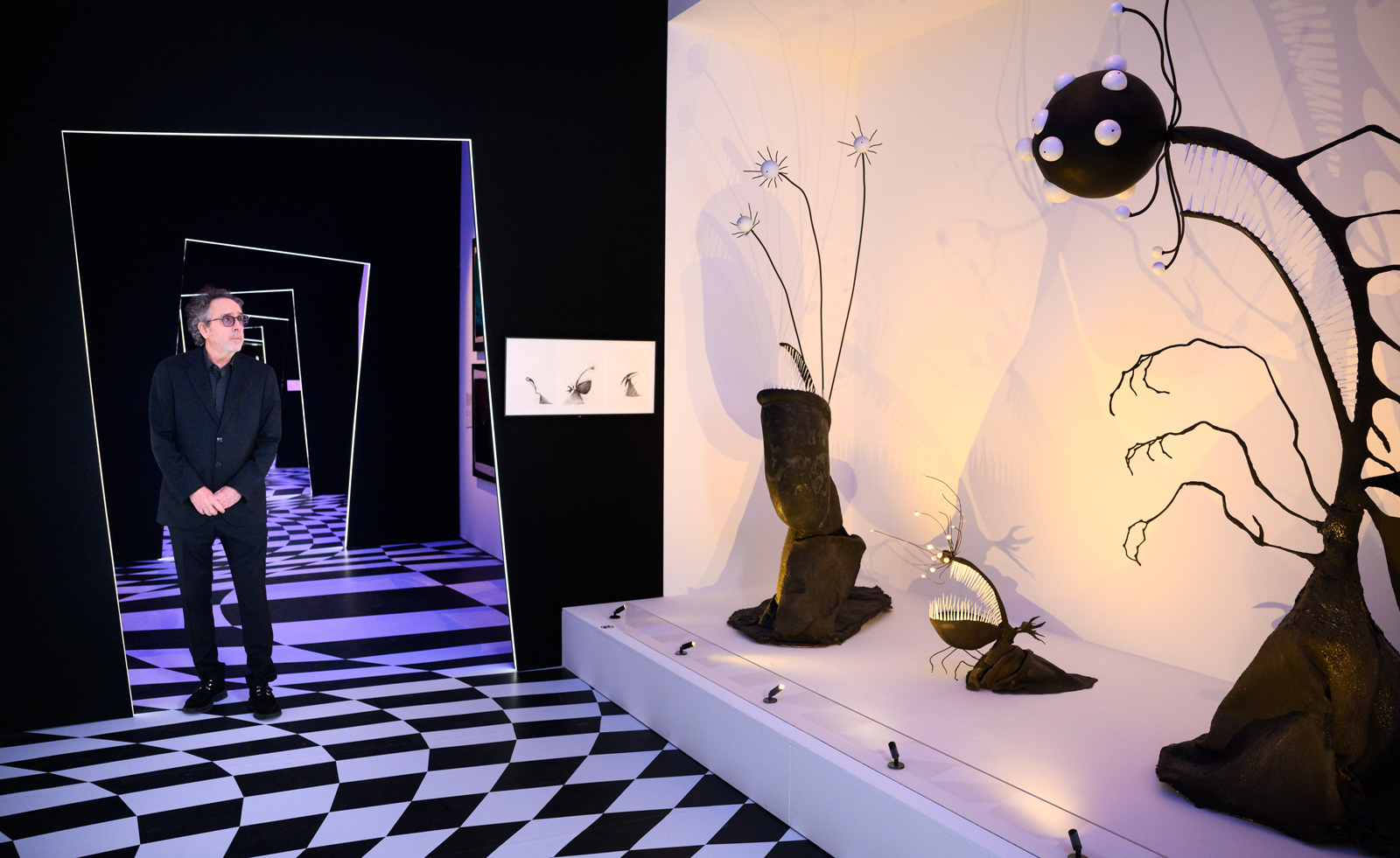
‘If you’d asked me a year ago what defines the Burtonesque, I might have referenced those usual aphorisms around spirals and stripes and checkerboards,’ offers Maria McLintock, the curator behind The World of Tim Burton, a comprehensive new survey at the Design Museum. ‘Actually, it's about a craft, a dedication to slowness, to the handmade; of working with designers like Colleen Atwood on costume or Rick Heinrichs on production, in a very involved and iterative way.’ McLintock is well versed in the singular sensibility of Burton’s creative output – as a teenager she gorged on the filmmaker’s oeuvre she says – and the show provides a rich interrogation of his practice, highlighting in particular the relationships that have been most pivotal in the spell he’s cast over the past five decades.
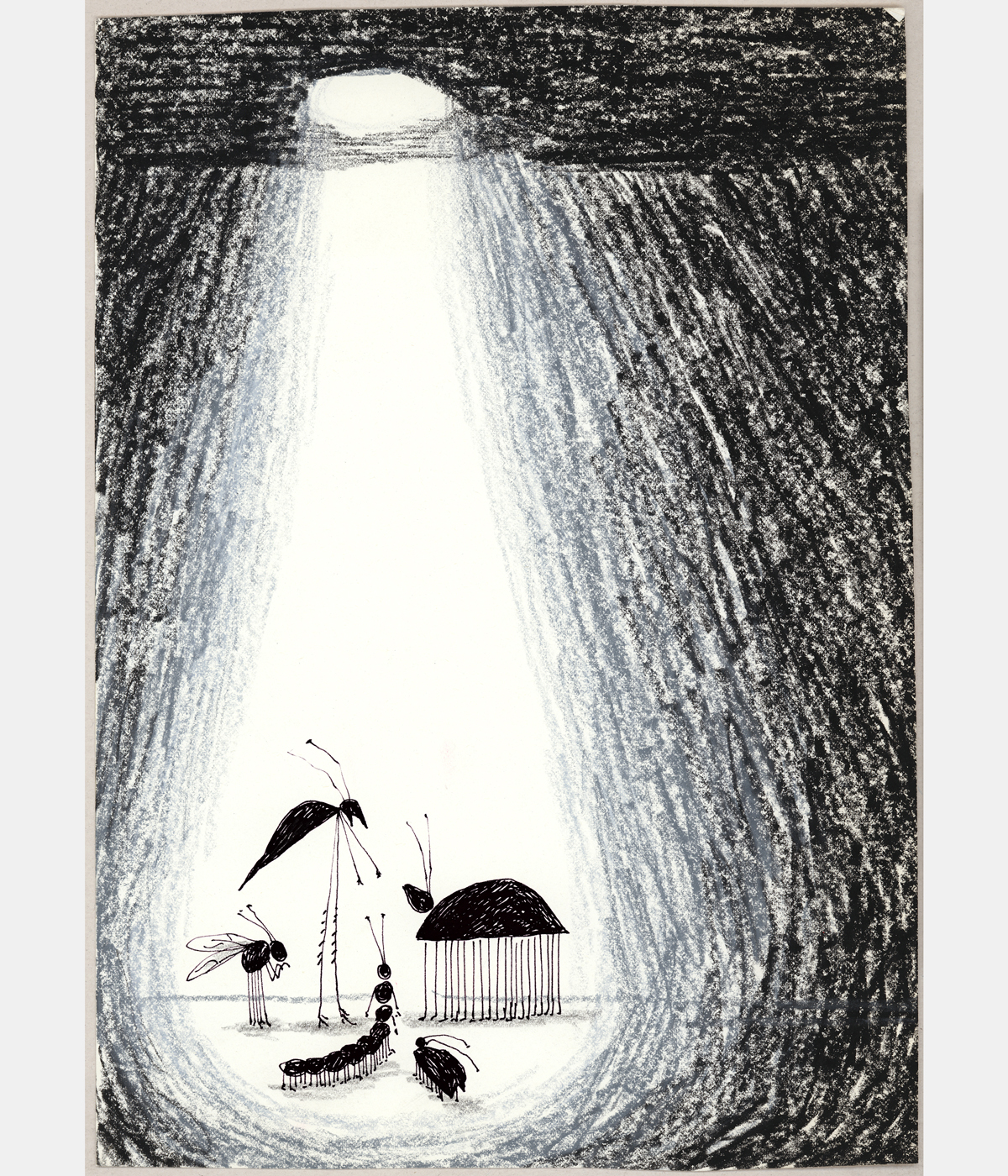
Untitled (Creature Series). 1994 © Tim Burton
Initially engineered by curators Ron Magliozzi and Jenny He for MoMA in 2009, versions of the show have since been staged in 14 cities in 11 countries. This iteration marks a conclusion; a grand finale in the director’s adopted city (25 years and counting), with over 600 items on display and more than 32,000 tickets sold ahead of its opening (the museum’s biggest ever pre-sale). Detangling Burton’s distinctive approach to storytelling – conducted in the preliminary stages with drawings on whatever material is close to hand, a napkin from the Ritz Paris or across the classifieds of the Los Angeles Times – here McLintock foregrounds those elements that honour a process. ‘Filmmaking is a design practice,’ she notes. ‘And there's a particular relationship that Tim has to design, then there's a sort of responsibility for us to highlight the way that design contributes to film and cinema more broadly.’
Divided into six spaces with monikers like ‘Crafting Imagination’ and ‘Drawing Narratives’, The World of Tim Burton introduces itself with an on-brand black and white timeline before quickly diverting into a colourful ‘neighbourhood’ display that references Burbank, California, where Burton was born in 1958; here his prizewinning design for a garbage company features alongside the respective certificate and a clip from the local newspaper (he was 13 at the time). Most prominent across the show however are models and sketches – presented behind glass or amongst the papers piled on a recreation of Burton’s desk – while there are also mementos from his time working at Disney near the start of his career. Employed as an ‘in-betweener’, Burton was responsible for drawing the in-between shots that create movement in animation.
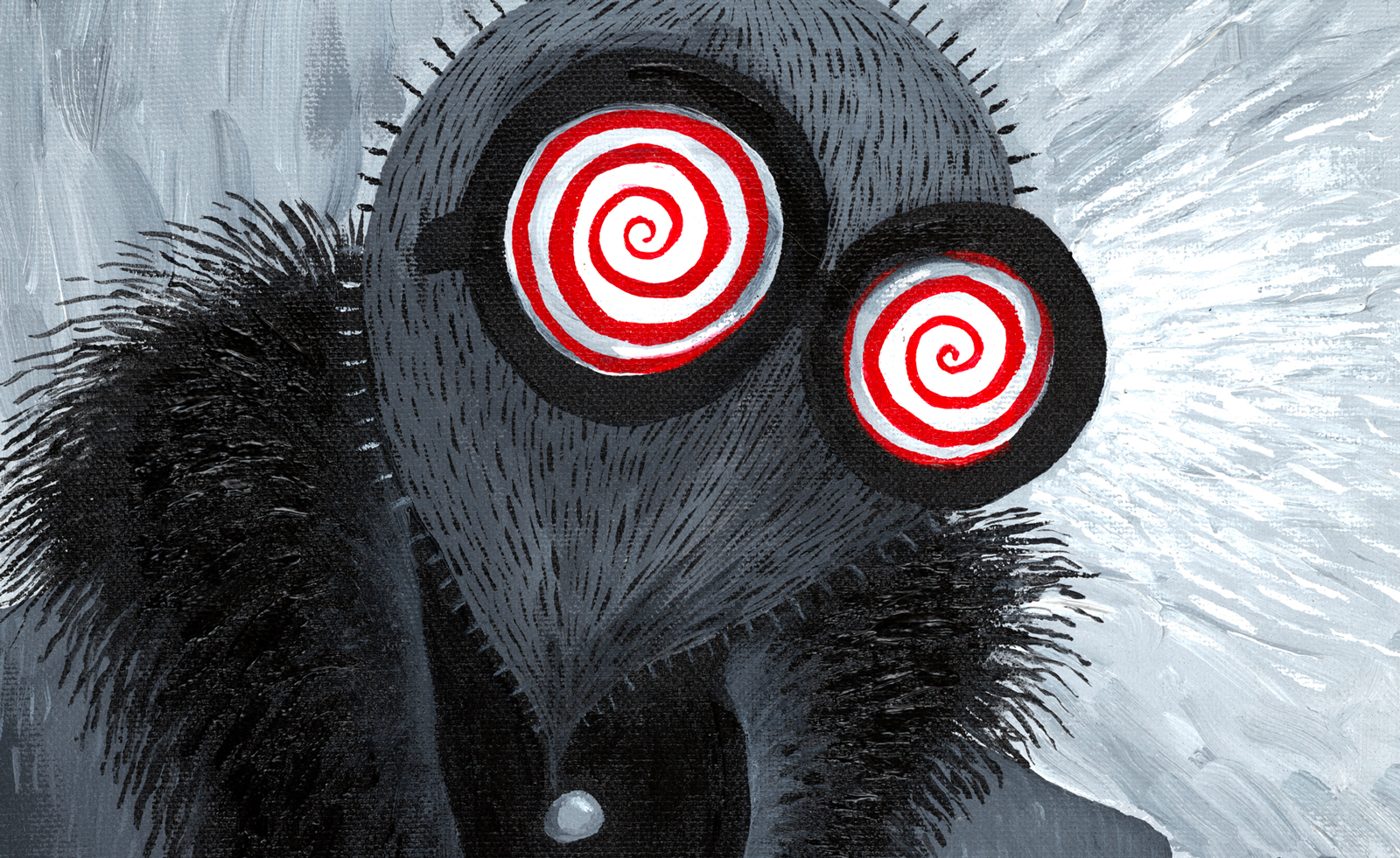
Percepto, c. 1996–1997. © Tim Burton
Elsewhere, ‘Building Worlds’ showcases a series of costumes alongside their initial illustrations: a black and white striped dress worn by Christina Ricci in Sleepy Hollow – the stripes painted by Atwood, a nod to Burton’s emphasis on the handmade – features, as well as Johnny Depp’s leather suit – and the scissorhands by special effects artist Stan Winston – from Edward Scissorhands, perhaps one of the most intriguing and fan-favourite pieces, largely comprised of belts. A more recent addition arrives in the form of Jenna Ortega’s Rave’N dance dress from Wednesday, displayed alongside the character’s grey and black school uniform (the former was an Alaïa design, sourced on Bond Street). ‘When you see the costumes up close,’ says McLintock, ‘you realise that Colleen is just nothing short of a genius. They’re all magical.’
‘Production design or costumes, they define a character – define a thing. Film is a collaborative medium, it’s a back and forth idea,’ explained Burton at the show’s opening, during a roundtable for press with McLintock and director and CEO of the Design Museum, Tim Marlow. ‘With collaborators, even with my crude drawings, I always felt they understood what they were, and that was part of forming the collaboration. You can't find it with everybody, it's a rare thing.’ The curator agrees, telling Wallpaper*, ‘While there is the kind of auteur, the director, it really does take a village – an army to produce a film. The fact that Tim, uniquely, has worked with the same team over and over again, felt really important to unpick and untangle. Firstly, why that is, and secondly, how their contributions have defined the aesthetic.’
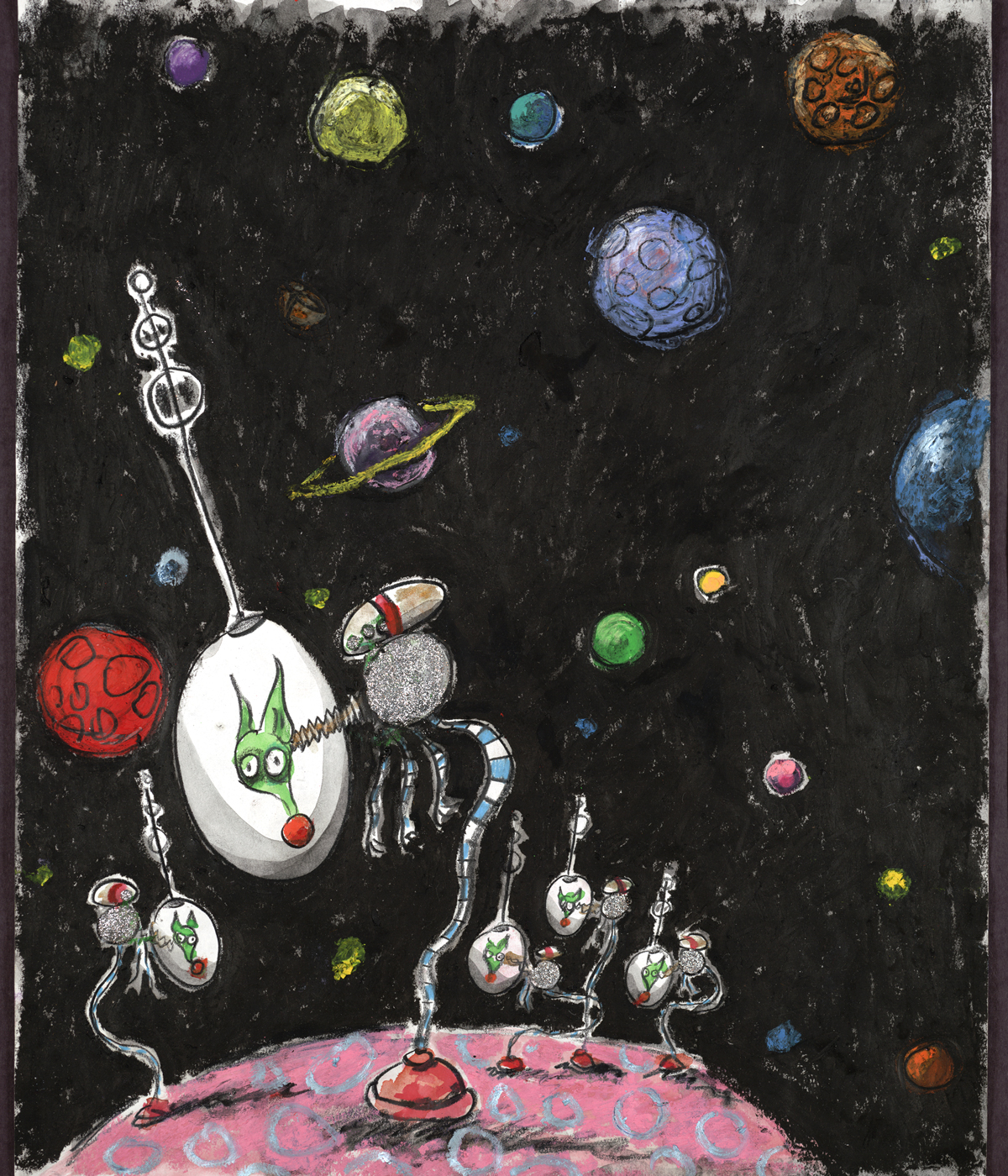
Untitled (Dogs in space). 1998. © Tim Burton
For her part, Atwood, interviewed by Anja Aronowsky Cronberg for the accompanying catalogue, Designing Worlds, says that her connection with Burton ‘was immediate. We shared the same aesthetic universe and minimalist approach; we spoke the same language.’ The sentiment is presumably shared by Heinrichs, whom Burton met at Disney (a clip of the pair in their early studio appears in a film that closes the show), as well as puppet makers Mackinnon & Saunders, whose work fills the museum. Beyond the big screen, the scope of Burton’s influence is underscored with photographs by Tim Walker, a music video for The Killers, and an invite for the late Alexander McQueen, sketched by Burton for the designer’s Autumn/Winter 2002/03 fashion show, Supercalifragilisticexpialidocious. ‘It’s not so much about art, it's more about the process,’ said the filmmaker, characterising the through line in his work. ‘For me, one thing leads to another.’
The World of Tim Burton is at the Design Museum until 21 April 2025
designmuseum.org
Wallpaper* Newsletter
Receive our daily digest of inspiration, escapism and design stories from around the world direct to your inbox.
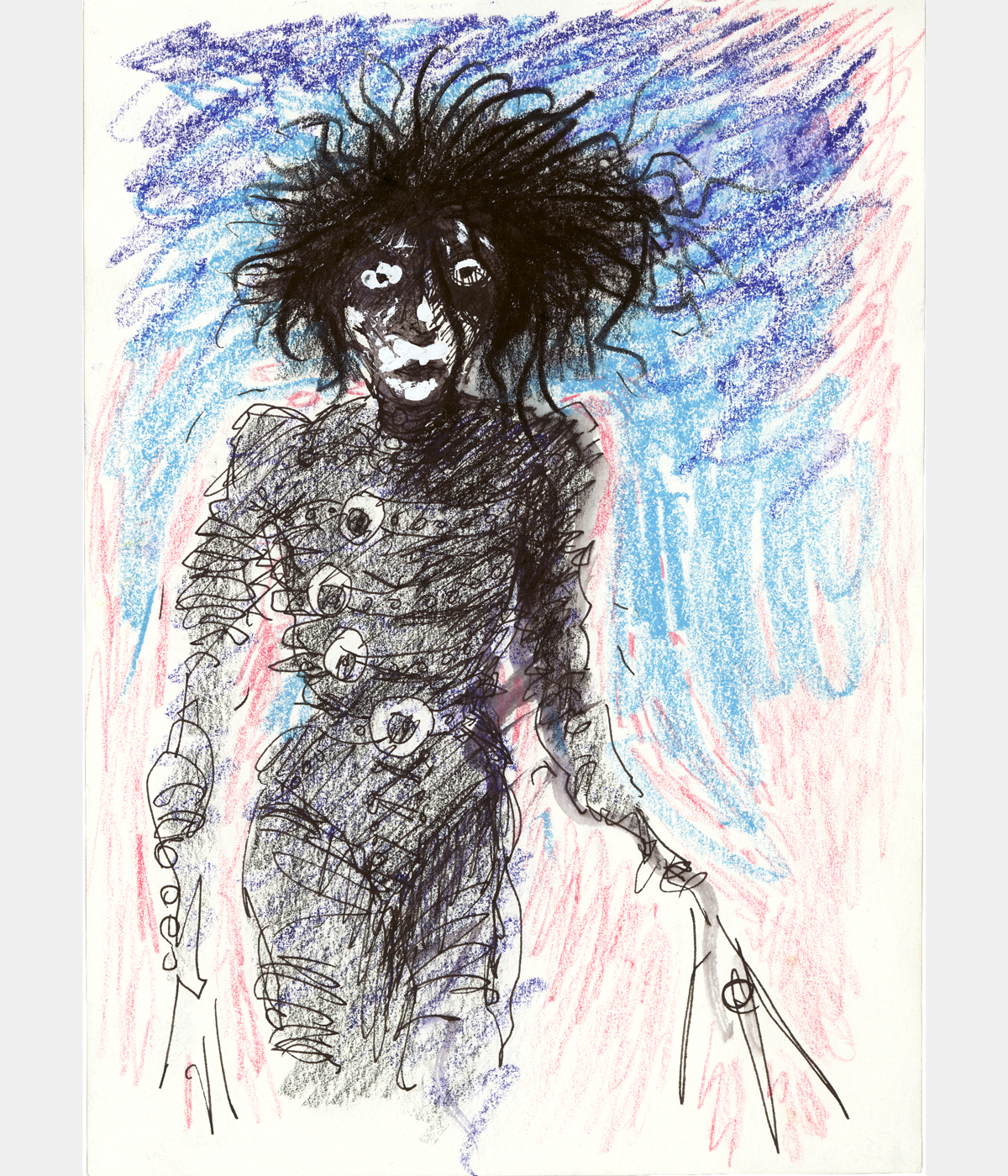
Tim Burton, Untitled (Edward Scissorhands), 1990. EDWARD SCISSORHANDS ©1990. 20th Century Studios, Inc. All Rights Reserved
Zoe Whitfield is a London-based writer whose work spans contemporary culture, fashion, art and photography. She has written extensively for international titles including Interview, AnOther, i-D, Dazed and CNN Style, among others.
-
 Extreme Cashmere reimagines retail with its new Amsterdam store: ‘You want to take your shoes off and stay’
Extreme Cashmere reimagines retail with its new Amsterdam store: ‘You want to take your shoes off and stay’Wallpaper* takes a tour of Extreme Cashmere’s new Amsterdam store, a space which reflects the label’s famed hospitality and unconventional approach to knitwear
By Jack Moss
-
 Titanium watches are strong, light and enduring: here are some of the best
Titanium watches are strong, light and enduring: here are some of the bestBrands including Bremont, Christopher Ward and Grand Seiko are exploring the possibilities of titanium watches
By Chris Hall
-
 Warp Records announces its first event in over a decade at the Barbican
Warp Records announces its first event in over a decade at the Barbican‘A Warp Happening,' landing 14 June, is guaranteed to be an epic day out
By Tianna Williams